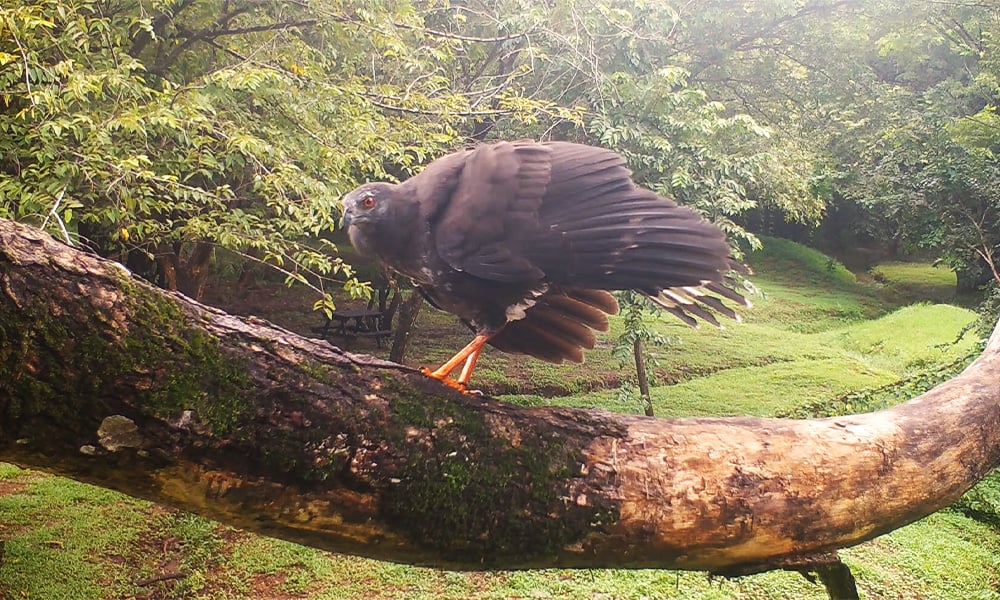Today we meet the crane hawk, the double-jointed bird of prey with piercing red eyes that is somehow both common and uncommon. The crane hawk (Geranospiza caerulescens) is known as the gavilán ranero in Spanish. Sometimes upon further study a single species will be broken into several different species. In the case of the crane hawk, researchers went the other way with it. What were once many different species of raptors have become the six subspecies of crane hawk.
Depending on the subspecies, crane hawks can be gray or black, with or without barring on the chest. The crane hawks that I’ve seen and recorded in Costa Rica are black with a few white bars across the underside of the tail and white bars on the underside of the wings that can only be seen during flight. They can easily be confused with the common black hawk from a distance. Both species are black with white bars on the tail. The crane hawk can be differentiated upon closer inspection by noting the dark beak, the red eyes, and the long, orange legs.
Crane hawks are a species that is both common and uncommon or more accurately put, widespread but rare. The species has a large range. They can be found from northern Mexico down to northern Argentina. Within that large range, they aren’t very common. To continue the comparison with the common black hawk, I’ve probably had one crane hawk sighting for every twenty common black hawk sighting. In Costa Rica, crane hawks can be found in lowland areas along both coasts. They tend to be found near water in forests and wooded swamps.
I noted the crane hawk’s long orange legs as one of its defining characteristics, and those legs possess an anatomic trick. Crane hawks have double-jointed tarsal bones which allows them to bend their legs forward and backward with great dexterity. They use this skill to insert their long legs into tree holes, crevices, and bromeliads to extract the lizards, frogs, mice, and nesting birds that probably thought they were safe from being eaten because they were so hidden away.
I record crane hawks a little more frequently than I see them in person in the exact habitat that the literature says they prefer, in the forest near a source of fresh water. Sometimes I record them on the ground investigating a puddle for something to eat but more often than not I’ll record them in the branches of trees overhanging a stream or pond.
Take a look at a few of my favorite crane hawk clips in the video below.
About the Author
Vincent Losasso, founder of Guanacaste Wildlife Monitoring, is a biologist who works with camera traps throughout Costa Rica. Learn more about his projects on facebook or instagram. You can also email him at: vincent@guanacastewildlifemonitoring.com






